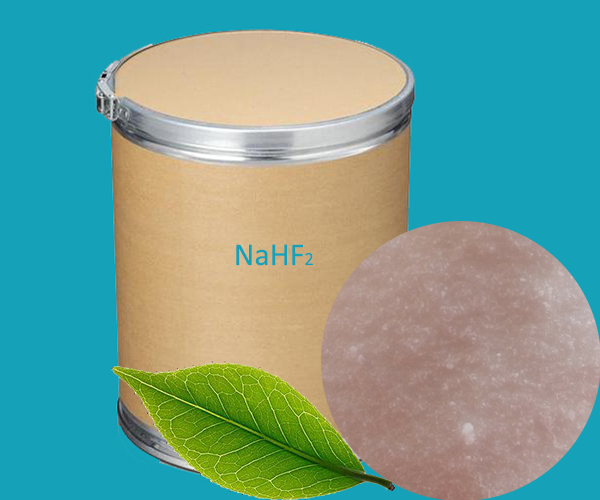Sodium hydrogen fluoride (NaHF₂) is an inorganic compound also known as sodium hydride. It is usually found in colorless to white crystals or powders and is highly corrosive. Sodium hydrogen fluoride is stable in the air and does not absorb moisture easily, but it will gradually decompose in a humid environment, releasing hydrofluoric acid vapor.
The chemical properties of sodium hydrogen fluoride are similar to other fluorides, and it is able to react with many metals to produce the corresponding fluoride and hydrogen. It can also react with water to produce hydrofluoric acid and sodium hydroxide. Therefore, extra care needs to be taken when handling sodium hydrogen fluoride to avoid contact with water, acids, or alkalis to avoid dangerous reactions.
Sodium hydrogen fluoride is mainly used in the industry to produce fluoride and other chemicals, such as hydrofluoric acid, aluminum fluoride, etc. It is also used as a catalyst, etching agent and cleaning agent, and has a wide range of applications in electronics, chemicals, ceramics, glass and other industries.
Uses of Sodium Hydrogen Fluoride
1. Chemical production: Sodium hydrogen fluoride is used in the production of other fluorine compounds, such as hydrofluoric acid, aluminum fluoride, etc., which are very important in the glass, ceramic, metallurgy, and chemical industries.
2. Metal surface treatment: In the metalworking industry, sodium bifluoride can be used as an etchant and cleaner to remove oxides and other contaminants from metal surfaces to improve the surface cleanliness of metals and the quality of subsequent treatments.
3. Glass and ceramic industry: Sodium bifluoride is used as a flux and emulsion agent in glass and ceramic manufacturing, helping to lower the melting point and improve the physical properties of the final product.
4. Metallurgical industry: In metallurgical processes, sodium hydrogen fluoride can be used as a co-solvent to help extract metals, especially in the production of aluminum.
5. Petroleum refining: Sodium hydrogen fluoride can be used as a catalyst to promote certain chemical reactions in the refining process, improving the quality and yield of the product.
6. Electronics industry: In semiconductor manufacturing, sodium bifluoride can be used to clean silicon wafers and remove impurities on the surface to ensure the performance of electronic components.
7. Fine chemicals: Sodium hydrogen fluoride is also used in the production of various fine chemicals, including pharmaceutical intermediates, agrochemicals, and other specialty chemicals.
 English
English Español
Español Português
Português Français
Français Deutsch
Deutsch Русский
Русский 中文
中文 日本語
日本語
